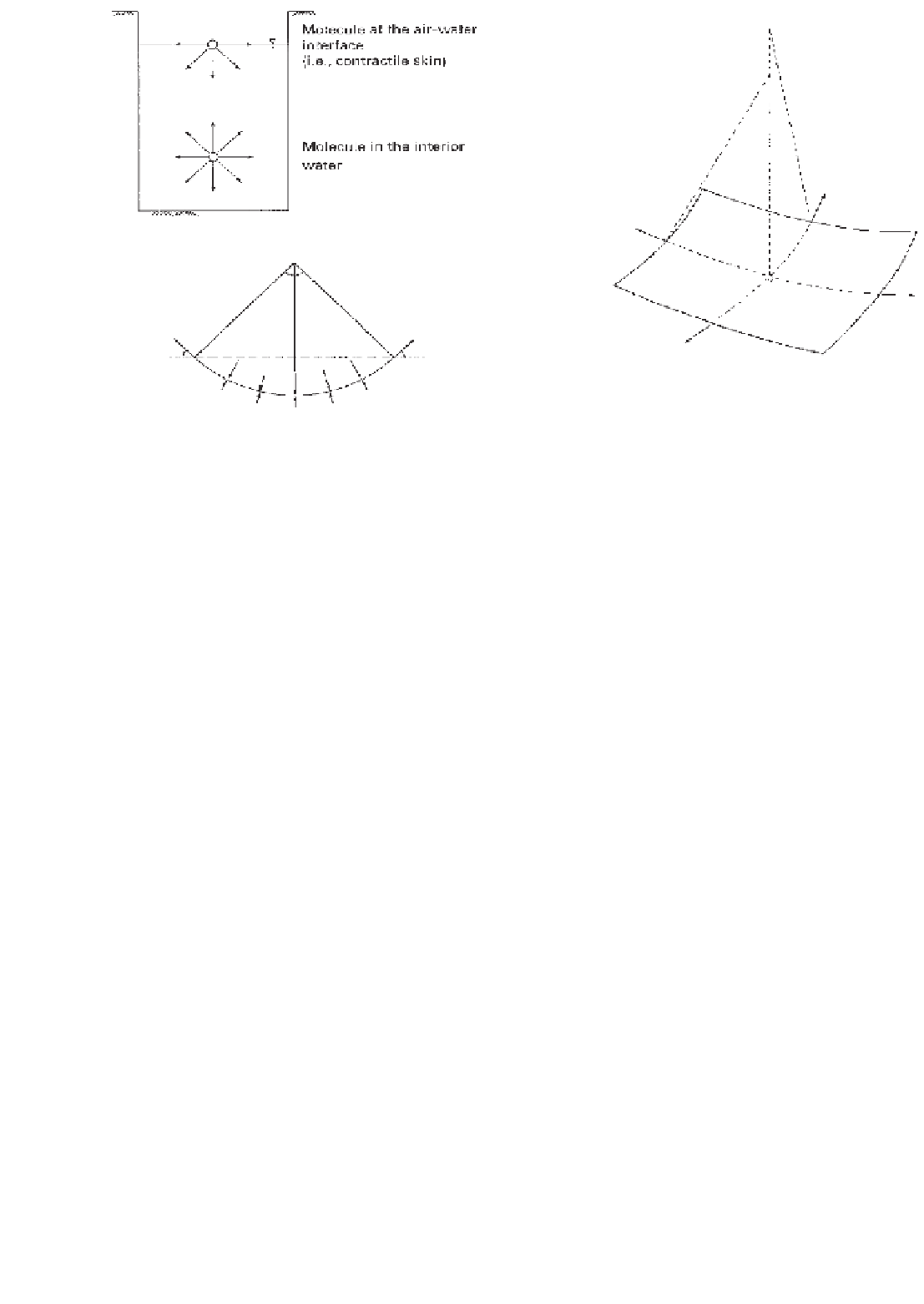Environmental Engineering Reference
In-Depth Information
0
R
1
R
2
T
s
T
s
R
s
bb
T
s
R
s
T
s
T
s
b
b
T
s
u
+
Δ
u
Figure 2.39
Surface tension on three-dimensional warped mem-
brane.
u
Figure 2.38
Surface tension phenomenon at air-water interface.
(a) Intermolecular forces acting on contractile skin. (b) Surface
tension forces associated with curved two-dimensional surface.
where:
2
R
s
sin
β
=
length of the membrane projected onto the
horizontal plane.
on each side, the membrane must assume a concave
curvature toward the larger pressure and exert a tension in
the membrane in order to be in equilibrium. The pressure
difference across the curved surface can be related to the
surface tension and the radius of curvature of the membrane
(Fig. 2.38b).
The pressures acting on the membrane are
u
and
u
Rearranging Eq. 2.36 gives
T
s
R
s
u
=
(2.37)
Equation 2.37 gives the pressure difference across a two-
dimensional curved surface with a radius
R
s
and a surface
tension
T
s
. For a warped or saddle-shaped surface (i.e.,
three-dimensional membrane), Eq. 2.37 can be extended
using the Laplace equation:
u
.
The membrane has a radius of curvature
R
s
and a surface
tension
T
s
. The horizontal forces along the membrane bal-
ance each other. Force equilibrium in the vertical direction
requires that
+
T
s
1
1
R
2
u
=
R
1
+
(2.38)
2
T
s
sin
β
=
2
uR
s
sin
β
(2.36)
where:
R
1
,
R
2
=
radii of curvature of a warped membrane in two
orthogonal principal planes.
Table 2.15 Surface Tension of Contractile Skin
(i.e., Air-Water interface) at Various Temperatures
If the radius of curvature is the same in all directions (i.e.,
R
1
and
R
2
are equal to
R
s
), Eq. 2.38 becomes
Temperature (
◦
C)
Surface Tension,
T
s
(
mN/m
)
2
T
s
R
s
u
=
(2.39)
0
75.7
10
74.2
The contractile skin in an unsaturated soil is subjected to
an air pressure
u
a
which is greater than the water pressure
u
w
. The pressure difference
u
a
−
20
72.75
30
71.2
u
w
is referred to as matric
suction (or the capillary pressure) in a soil. The pressure
difference causes the contractile skin to bend to a curvature
shown by Eq. 2.40:
40
69.6
60
66.2
80
62.6
100
58.8
2
T
s
R
s
u
a
−
u
w
=
(2.40)
Source
: From Kaye and Laby, 1973.













Search WWH ::

Custom Search